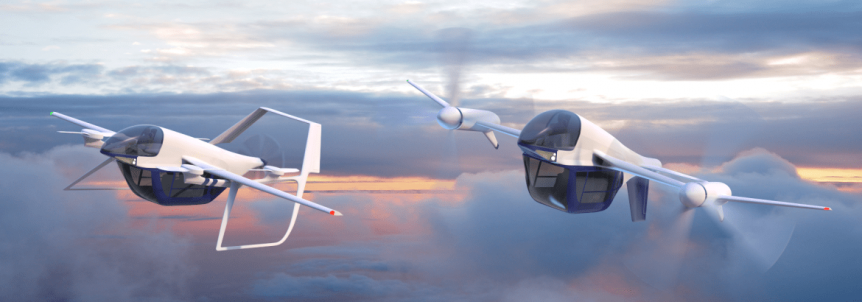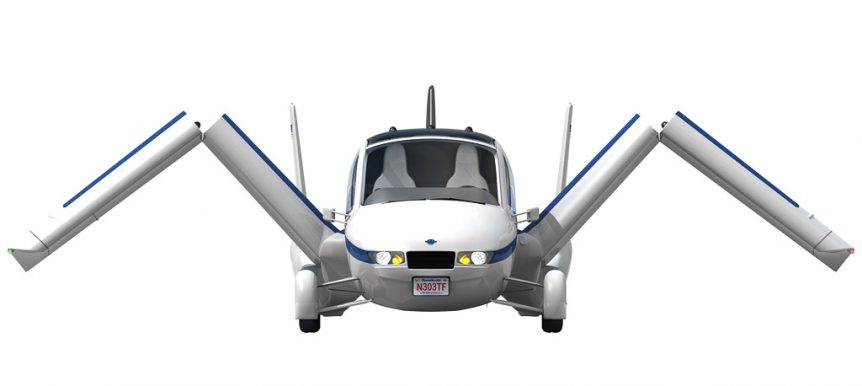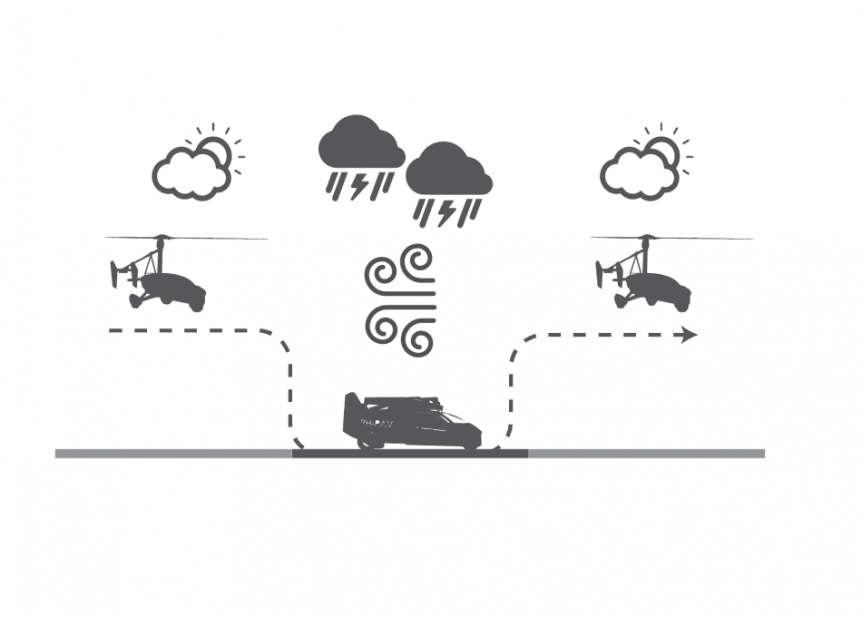A flying machine in your two-car garage was the promise heralded by Popular Science and Popular Mechanics magazines during the 1950s and 1960. It was the era of Bob Cummings piloting his Aerocar on his popular TV show, and KISN radio watching over traffic with one in Portland, Oregon. Expectations were high and often disappointed. High costs of establishing a network of two-ton, four-passenger eVTOL (electric Vertical Take Off and Landing) machines dissuaded even Uber from pursuing that goal. Consider that skyports, vertiports, or whatever they ended up as are enormously expensive, and a network with charging stations and passenger accommodations would be a large investment. Beyond that, each sky taxi would cost well into the high six figures, something that would require corporate ownership rather than the owner/driver model on which Uber’s land-based operations depend. At least four eVTOLs are now on the market or headed there. None cost more than a claimed $150,000 base price, a plausible outlay …
Terrafugia in Transition
Terrafugia, a company started by a group of inspired college friends, has made it a mission to bring a flying car to the marketplace. Quite literally – it’s in their mission statement: “Terrafugia’s mission is to create the ultimate mobility solution – flying cars.” Even though the term is somewhat decried in current parlance – things like urban air taxis or sky taxis that would provide Urban Air Mobility being preferred. The Transition Their first craft, the Transition, earned a high hype score, with even Hammacher-Schlemmer including the flying car in their catalog. It flew at AirVenture in 2013, demonstrating its folding wings and reasonable Light Sport Aircraft performance (even with a waiver for its “heavy LSA” gross weight). In some respects, the Transition is like Molt Taylor’s famous Aerocar, the first such vehicle certified for land and air travel. It’s a great deal simpler to operate, though, not requiring a trailer like the Aerocar to haul the wings and …
MAGiCALL Motor/Controller Vies for Simplicity, Lightness
MAGiCALL, a California-based firm whose slogan, “Innovative Magnetics to Power Your Products,” covers everything from aircraft to medical applications, has introduced a combined MAGiDRIVE™ integrated motor and controller line of products. These are of particular interest for electric aircraft designers, since the company has been picked to supply motors to the Airbus A3 Vahana project. Whatever else they may accomplish, the many multi-rotor sky taxis will create a demand for a great number of motors, controllers, and battery packs. 16 on every Volocopter, eight to 16 on every Ehang, and eight on every Vahana will promote mass production, perhaps leading to a Model T moment where such technology becomes universally affordable. What Ford did for automobiles, most of the current crop of sky taxi designers are attempting for the democratization of flight. They could start with Ford employee Bill Stout’s motto, Simplicate and add more lightness.” He, by the way, designed the Ford TriMotor, the first certified airliner in America, …
Geely Looks Skyward, Buys Terrafugia
Geely is a huge enterprise, and while not the largest maker of electric cars in China, sold 766,000 gas and electric vehicles in 2016, growing 50 percent over the previous year. Its profits grew 126 percent last year, primarily due to sports utility vehicle (SUV) sales. As EV Obsession reports: “The 351,861 electric car sales registered in China during 2016 represent approximately 46% of ALL plug-ins sold worldwide this year, with Chinese carmakers responsible for 43% of all EV production in 2016.” Geely, surprisingly, owns Lotus, Malaysia’s Proton Motors, the firm that makes London’s iconic taxis, and Volvo. Volvo just announced that all its cars will be electric or hybrid starting in 2019. Fortune reports that the company has become highly profitable, with 2016 net returns doubling to 5.1 billion yuan ($741 million), and possibly rising to 7 billion yuan in 2017. What is a successful company to do with all that money? The South China Morning Post reports on one …
PAL-V Goes on Sale in America
Pal-V is a “flying car” that looks more like a flying motorcycle. Its three wheels would make it so in many countries. It flies as a gyrocopter, maintaining a sporty approach to its transition from ground to air. One reader has suggested dropping the term, “flying car,” even though it has captured reporters’ (and America’s) imaginations for the last hundred years. Dutch Treat? The Dutch creation, under development for close to a decade, looks like a plausible contender for an all-purpose transportation device. Its compact dimensions mimic a car on the ground, and its clever unfolding to become a gyrocopter allows quick and apparently easy transition from one mode to another. The company calls the total experience, “FlyDriving.” In “car” mode, its rear suspension geometry allows leaning into the corners with “Dynamic Curve Stabilizer” control, very much like a motorcycle. The closed two-seat cabin is considerably less raucous, though, than open-air motorcycling. In aircraft mode, its 87 mph cruising speed …
Airbus’s Aerial Commuter of the Future?
Airbus and its partner Local Motors have just finished a successful design challenge for delivery drones that can carry things like emergency medical supplies to selected destinations. Recent announcements and the release of a patent drawing show Airbus is doing serious work toward delivering humans to their selected destinations in a scaled-up version of such drones. Many brilliant people have tried to combine the benefits of ground and air transport over the years, including Molt Taylor, designer of the rightly famous Aerocars. The example at Seattle’s Museum of Flight causes docents to lower their voices out of respect for the accomplishment. That’s certainly a concept promoted for last decade by Dr. Brien Seeley, head of the Sustainable Aviation Foundation and sponsor for this blog. His AIAA paper on Regional Sky Taxis spells out his hopes for alleviating ground-bound gridlock with aerial alternatives. Recently, Airbus formed a group in California’s Silicon Valley called A3, or A Cubed. The group earned a …
PAL-V, Carving Its Way into the Sky
John van den Heuvel, Science & Technology Advisor (Innovatie Attaché) for the Netherlands Office for Science & Technology (NOST), and working in the Dutch Consulate General in San Francisco, wants people to know about his country’s innovative answer to bland or grating driving experiences. It may even signal a first wave in freeing up freeways and opening new aerial vistas for commuters. Think of the automobile commercials that show thousands of commuters trapped in grinding bumper-to-bumper traffic, only to be outdone by a spiffily-dressed, cheerful-looking soul who just happens to own the sponsor’s vehicle and to somehow find the magic exit road that takes the driver down open roads and past idyllic views. We envy the thought, but most of us know it’s a fantasy. The Dutch government is intervening and showing its ideas to the rest of the world through the PAL-V (personal air and land vehicle) which combines three-wheel ground vehicle and gyrocopter. According to its makers, “The …






